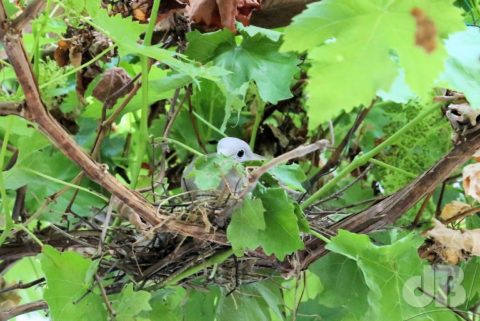I have mentioned the Eurasian Collared Dove, Streptopelia decaocto, previously on the blog, describing it as an avian continuity error. It’s a sweet bird, familiar for its “coo-cooh-coo” call, which people sometimes (quite bizarrely) mistake for the call of the cuckoo. We hear this species of dove all year round in the UK and have done for decades. But, that has only been the case since around the time of WWII and really mostly since the 1950s, hence the continuity error of period dramas set before that time.

It is a sweet bird, you wouldn’t think she, and all birds, are descended from dinosaurs of the Tyrannosaurus rex type, the theropods. That aside, the Collared Dove finds itself in essentially the same ecological niche and more that were occupied by the migratory, but native, European Turtle Dove, Streptopelia turtur, about which I have also written a few times here.
We have had the collared species nest in at least one of our garden bushes in years past. But, this year, a female has set up nest in the rather precarious creepers of one of our grapevines that grow beneath a lean-to area that abutts our downstairs bedroom. She seems very settled and is ever watchful when I head to the waterbutts that are housed in that area. Occasionally, she will de-nest and take flight, but never goes far, simply lands on the fence a few metres away. Once I’ve got the water I need for the wildflower patch, she’ll dart back in with barely a sound and nestle down. We are trying to avoid using this area of the garden and given that the waterbutts are now empty, I’ll have to get to the tap on the wall behind her nest to access water for the plants…
I hope the eggs she’s incubating hatch and that we see the fledgelings. We’ve had fledged Starlings, Blackbirds, Goldfinches, and Blue Tits in the garden so far this year, possibly Greenfinches too. All of those species will generally have a spring brood, but doves and pigeons can and do have more than a single brood through the season.